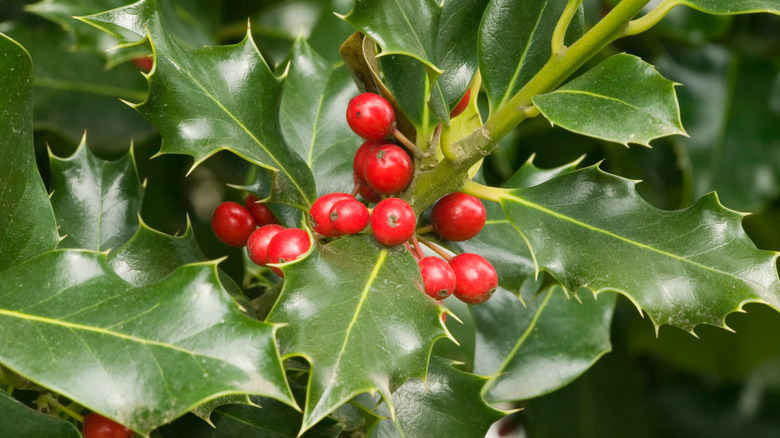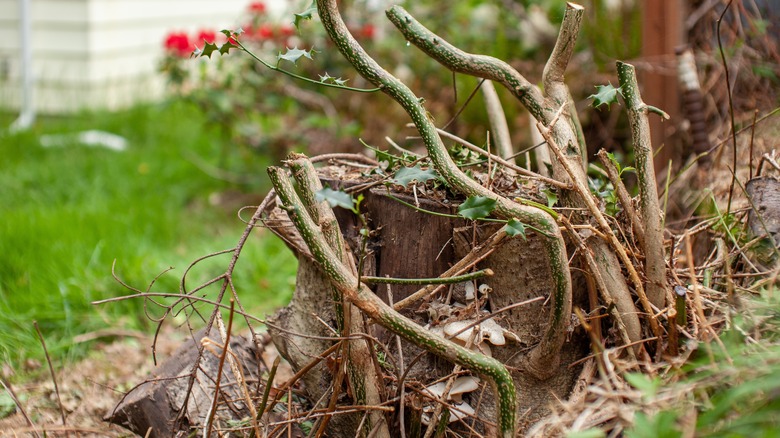Why You Might Regret Planting A Colorful Holly Tree In Your Yard
Installing a new plant in your yard is exciting, especially if it's one that promises to be evergreen and resilient to harsh conditions. One such plant is the holly tree. Available in numerous varieties, hollies are distinguished by their bright red berries and are closely associated with Christmas. But while they do possess many remarkable characteristics — hollies really are easy to successfully grow and care for – you should pause before going whole hog and planting one in your yard. Though these evergreens' ability to make your landscaping look great all year is admirable, holly is a notoriously invasive species. It will compete for natural resources and crowd out native plants, thanks to its aggressive growth habits.
Moreover, once holly is fully integrated in your yard, you'll struggle to beat it down and keep it from coming back without resorting to some pretty harsh methods. Holly can also be a concern for parents of young children, as little ones may be drawn to the bright berries. Inviting though they may seem, holly berries are highly toxic to humans — some children can experience adverse symptoms after ingesting only two berries. If you choose to cut back the berry-bearing portions of the tree, remember to always wear gardening gloves to avoid accidental phytophotodermatitis, an allergy-like reaction that can leave painful blisters and lesions in its wake.
How to get rid of unwanted holly bushes
Even if you don't choose to plant a holly tree in your yard, don't be surprised if you notice one pushing through the soil. Birds are one of the common propagators of holly bushes, dispersing the seeds in a variety of ways. The best thing to do when you see an unwanted holly sprig cropping up in your yard is to dig it out with a hand shovel and garden gloves. Make sure that you have eradicated the entirety of the immature root system, or you may have a bigger problem on your hands later.
Holly is so resilient that one of the only effective methods of killing this plant is to use hefty amounts of herbicide applied directly to a newly cut stump. You can also cut the plant back and grind the stump to the ground, but you should know that hollies are capable of re-sprouting new shoots from a damaged stump. Digging out a holly stump may be the best option if you need long-term relief from its presence (if it's growing near your mailbox, for instance). But this is not for the faint of heart. You will need to dig out the plant's deeply integrated root system — which could be up to 3 feet deep – to remove it entirely. Carve out a long afternoon to attempt this project, ideally in the fall or early winter when the plant's root system is a bit weaker.

